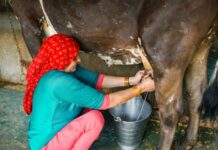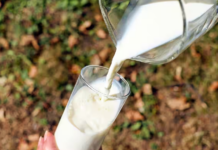Mondelez India, known for its popular chocolate brands like Cadbury Dairy Milk and Toblerone, has doubled its rural footprint in the past five years. This growth has been attributed to the strategic deployment of additional chillers and extending their market reach to more villages, thereby gaining a competitive edge in the packaged foods sector.
The company’s deliberate and mindful expansion into rural areas revolves around maintaining product quality and establishing a reliable cold chain network. “We don’t want to expand in rural mindlessly but also ensure product quality…We are focusing on expanding our portfolio in rural markets only when we have the necessary cold chain capabilities, both in our distribution and at the last mile,” explained Desmond D’Souza, director of sales at Mondelez India.
Present in over 100,000 villages, Mondelez India is tapping into a significant market, as India’s more than 600,000 villages are home to nearly 69% of the country’s population. Despite rural per capita FMCG consumption being lower than urban areas ($27 versus $82), these markets offer a substantial consumer base for packaged goods.
The task of reaching these markets, however, is challenging, especially for products requiring cold chain systems, like beverages, ice creams, and chocolates.
Improved road connectivity and rural electrification in recent years have accelerated the company’s rural outreach.
D’Souza highlighted their strategic approach, which includes selecting villages based on a development index encompassing economic and infrastructural factors. “We work with partners who help us prioritise our outreach and expansion based on these factors, which is also supported with geo analytics to identify which village should be reached first and where our distributor needs to be located. In the last five years, we have more than doubled our presence,” he said.
Rural sales now contribute a quarter of the company’s traditional trade revenue. “Rural has been growing significantly and has been ahead of urban consistently, and we expect this trend to continue,” D’Souza remarked. He noted a significant increase in deployment of smaller chillers in rural centres compared to urban areas, although the exact numbers were not disclosed.
“The first thing is to reach with our baseline of products, which is biscuits and baseline of chocolates, etc. Then you want to develop that and start building growth on top of it, and visi coolers (smaller chillers) that we put inside stores are a very integral part of category development for us. In the last three years, we’ve almost doubled our presence on visi coolers both in urban and rural markets. The number in rural areas will be probably five to six times that of urban,” D’Souza added.
This expansion aligns with Mondelez India’s 2023 announcement of a ₹4,000 crore investment over four years in India, aimed at increasing manufacturing capacity and enhancing cold-chain and warehouse facilities. This investment follows an estimated ₹1,500 crore infused into the market between 2019 and 2022. According to the reports published in dairynews7x7.com .
Rural markets, with their vast population, are key for companies offering daily household products like soaps, shampoos, noodles, and chips. Consumer goods makers have been actively expanding their reach in India’s villages for years by building direct distribution networks and offering smaller, more affordable product sizes. Nestle India, for instance, now covers nearly 185,000 villages, while Dabur India reaches over 100,638 villages.



























